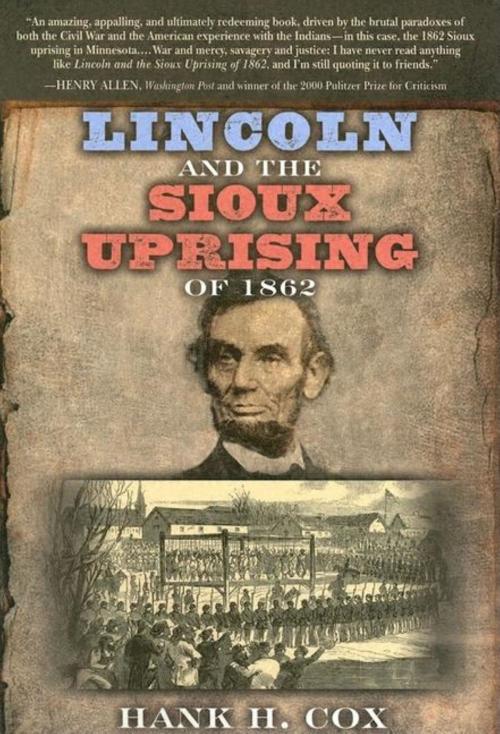Lincoln and the Sioux Uprising of 1862
Nonfiction, History, Americas, Native American, United States, 19th Century| Author: | Hank H. Cox | ISBN: | 9781620452776 |
| Publisher: | Turner Publishing Company | Publication: | July 1, 2005 |
| Imprint: | Cumberland House Publishing | Language: | English |
| Author: | Hank H. Cox |
| ISBN: | 9781620452776 |
| Publisher: | Turner Publishing Company |
| Publication: | July 1, 2005 |
| Imprint: | Cumberland House Publishing |
| Language: | English |
On the bright Sunday morning of August 17, 1862, four Sioux warriors emerged from the Big Woods northwest of St. Paul, Minnesota, on their way home from an unsuccessful hunt. When they came upon the homestead of Robinson Jones, a white man who ran a post office and general store and offered lodging for travelers, the Indians opened fire on the settlers, killing almost all of them. Soon bands of Sioux were rampaging across southwestern Minnesota, attacking farms and trading posts and murdering everywhere they wentósplitting the skulls of men; clubbing children to death; raping daughters and wives before disemboweling them; cutting off hands, breasts, and genitals; and looting whatever could be taken before setting fire to what remained. Perhaps as many as two thousand settlers were brutally massacred, although the number has never been firmly established. Once the uprising was suppressed, 303 Sioux warriors were sentenced to death. The people of Minnesota called for their immediate execution, a sentiment that matched the national mood. Abraham Lincoln suspected that most of those convicted were marginal players in the rebellion and that the worst culprits had escaped, and he carefully reviewed each case before selecting the 39ólater reduced to 38ómen to hang whom he believed to be guilty of the worst crimes. The remainder were committed to life in prison. "I could not hang men for votes," he later explained. On December 26 the 38 were simultaneously hanged on a gallows construction especially for them. The Sioux Uprising of 1862, also known as the Dakota War, sounded the first shots of a war that continued for another 28 years, culminating in the massacre of Indian women and children at Wounded Knee in 1890. Lincoln's death at the hands of John Wilkes Booth ended his intention to reform the government's Indian policy, and both political parties continued to use the system to reward their supporters, a practice that largely continues to this day.
On the bright Sunday morning of August 17, 1862, four Sioux warriors emerged from the Big Woods northwest of St. Paul, Minnesota, on their way home from an unsuccessful hunt. When they came upon the homestead of Robinson Jones, a white man who ran a post office and general store and offered lodging for travelers, the Indians opened fire on the settlers, killing almost all of them. Soon bands of Sioux were rampaging across southwestern Minnesota, attacking farms and trading posts and murdering everywhere they wentósplitting the skulls of men; clubbing children to death; raping daughters and wives before disemboweling them; cutting off hands, breasts, and genitals; and looting whatever could be taken before setting fire to what remained. Perhaps as many as two thousand settlers were brutally massacred, although the number has never been firmly established. Once the uprising was suppressed, 303 Sioux warriors were sentenced to death. The people of Minnesota called for their immediate execution, a sentiment that matched the national mood. Abraham Lincoln suspected that most of those convicted were marginal players in the rebellion and that the worst culprits had escaped, and he carefully reviewed each case before selecting the 39ólater reduced to 38ómen to hang whom he believed to be guilty of the worst crimes. The remainder were committed to life in prison. "I could not hang men for votes," he later explained. On December 26 the 38 were simultaneously hanged on a gallows construction especially for them. The Sioux Uprising of 1862, also known as the Dakota War, sounded the first shots of a war that continued for another 28 years, culminating in the massacre of Indian women and children at Wounded Knee in 1890. Lincoln's death at the hands of John Wilkes Booth ended his intention to reform the government's Indian policy, and both political parties continued to use the system to reward their supporters, a practice that largely continues to this day.















